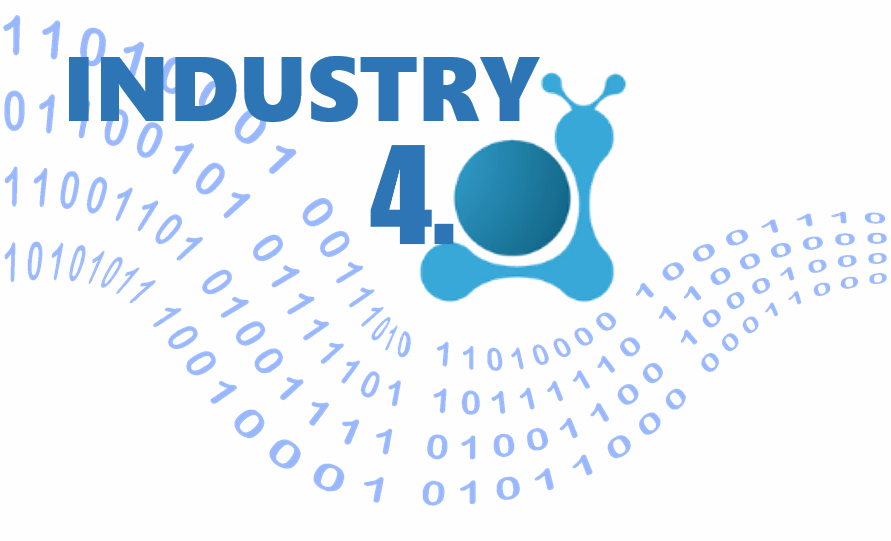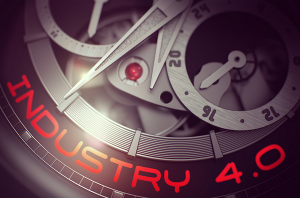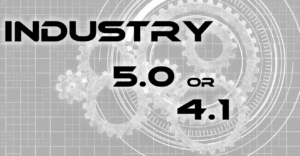A revolution in manufacturing is fomenting — at least that’s what we’ve been told for nearly a decade. The revolution is often labeled “Industry 4.0” signaling it’s the fourth industrial revolution. According to Ashwin Kshirasagar, “The term Industry 4.0 was coined [in 2011] by the BMBF in Germany (Federal Ministry of Education and Research), which was a project by the German government to focus on the digitization of the manufacturing industry.”[1] It makes perfect sense that manufacturing, like other industries, must adapt to the digital age. For years business consultants have suggested companies organized around principles developed during the industrial age need to transform into digital enterprises in order to survive in the digital age. However, transforming has proven difficult for many manufacturers because manufacturing is the beating heart of the industrial age. Change, however, is inevitable.
Deloitte analysts note, “Faced with an ever-increasing array of new technologies, organizational silos that hamper decision-making, and in many cases a lack of vision, many leaders are challenged to develop effective strategies as they seek to navigate Industry 4.0.”[2] They draw that conclusion from “a survey of more than 2,000 C-suite executives from 19 countries on how they and their organizations are embracing the opportunities and challenges of Industry 4.0.” They cite eleven specific challenges hampering Industry 4.0 transformation. They are:
1) Lack of vision on the part of leadership
2) Too many technological choices
3) Organizational or geographical silos
4) Pressure to deliver short-term results
5) Lack of skilled talent
6) Lack of diverse perspectives
7) Resistance to change
8) Lack of strategic imperative
9) Funding challenges
10) The pace of change
11) Fear of failure
Many revolutions incubate for years before hatching into full-fledged drivers of change. Industry 4.0 certainly fits that pattern. In order to join the revolution, manufacturers need to embrace three digital age technologies: big data, artificial intelligence (AI), and the Internet of Things (IoT).
Industry 4.0 technology drivers
Since C-level executives cite too many technological choices as one of the barriers to Industry 4.0 transformation, the relatively slow rate of transformation should not be surprising. Charles Towers-Clark, Group CEO of Pod Group, asserts, “Big Data, AI, and IoT are three of the most widely misappropriated terms of recent times, and many do not know how these technologies are linked, or how they have paved the way for the technological progress we have come to expect.”[3] With other technologies — like augmented reality, telemetrics, robotic process automation, 5G telecommunications, and 3D printing — added to the mix, it’s little wonder executives are having difficulty making sense of it all. The best place to start is with the three foundational technologies: big data, AI, and IoT (sometimes called the Industrial Internet of Things (IIoT)).
Big data. The digital age is primarily based on the generation and availability of data. Data can be structured (e.g., spreadsheets) or unstructured (e.g., social media comments) and, at the highest level, can be either qualitative or quantitative. Minitab analysts note, “Quantitative data deals with numbers and things you can measure objectively: dimensions such as height, width, and length. Temperature and humidity. Prices. Area and volume. Qualitative data deals with characteristics and descriptors that can’t be easily measured, but can be observed subjectively — such as smells, tastes, textures, attractiveness, and color.”[4] Obtaining data is not generally a challenge for manufacturers — they’re drowning in data. In order to make sense of all that data, they require cognitive technologies capable of providing advanced analytics. Towers-Clark notes, “The rise of social media and e-commerce led to the idea of a digital persona, and the incredible value of data became apparent.”
Artificial Intelligence. Artificial intelligence is an umbrella term. Many analysts now talk about cognitive computing, a form of AI, because it can handle both structured and unstructured data and can provide insights even when the data is ambiguous. The most common form of AI in use today is machine learning, which is part of all cognitive computing systems. Towers-Clark notes, “This surge in available training data from a huge range of sources has led to a vast improvement in AI systems, a phenomenon known as the unreasonable effectiveness of data, which states that even simple algorithms, given enough data, can reach accurate conclusions. … Big Data has not just given an added boost to AI — it is required.”
Internet of Things. The final building block of the Industry 4.0 foundation is the IoT. It connects big data to the cognitive systems completing the Industry 4.0 ecosystem. The IoT remains in its infancy and continues to suffer from growing pains. Stephen Gold (@MAPICEO), President and CEO of the Manufacturers Alliance for Productivity and Innovation (MAPI), writes, “Arguably the most significant technological advance for American business — the Industrial Internet of Things (IIoT), which holds the promise of unimagined productivity gains and untold benefits to consumers — isn’t assured.”[5] The technology is so important to Industry 4.0 groups are working feverishly to overcome current IoT challenges and shortcomings.
Towers-Clark concludes, “IoT, Big Data, and AI all feed into each other and create an ecosystem of automation — IoT devices collect data on millions of criteria, which is then collated in the cloud, and used to train and improve AI algorithms. As such, ensuring that people understand how IoT, Big Data and AI interact and improve each other is the most important thing we can do to bring real improvements to our lives.”
Concluding thoughts
Few, if any, pundits deny a revolution is underway. Thomas Leeson (@TomLeesn), an industry marketing strategist at OpenText, reports, “Manufacturers are excited about the possibilities of digital transformation. As the Fourth Industrial Revolution gains traction, 65 percent of manufacturers expect to adopt digital manufacturing practices by 2020, according to IDC Manufacturing Insights.”[6] As explained above, however, the revolution is occurring in slow motion. Leeson cites research from his company that found, “Only 26 percent [of manufacturers] believe they have a ‘digital advantage’ from the investments they’ve made.” In Part 2 of this article, I’ll continue to explore challenges facing Industry 4.0 transformation as well as some suggestions for speeding up the revolution.
Footnotes
[1] Ashwin Kshirasagar, “Who coined the term ‘Industry 4.0’?” Quora, 28 February 2018.
[2] Deloitte, “Enterprises Slow to Adapt Strategies for Industry 4.0,” The Wall Street Journal, 3 February 2019.
[3] Charles Towers-Clark, “Big Data, IoT And AI, Part One: Three Sides Of The Same Coin,” Forbes, 15 February 2019.
[4] Staff, “Understanding Qualitative, Quantitative, Attribute, Discrete, and Continuous Data Types,” The Minitab Blog, 28 April 2017.
[5] Stephen Gold, “Bumps in the Road to Smart Manufacturing,” IndustryWeek, 6 March 2019.
[6] Thomas Leeson, “How Data Can Help Manufacturers Thrive in the Fourth Industrial Revolution,” Manufacturing.net, 5 March 2019.





